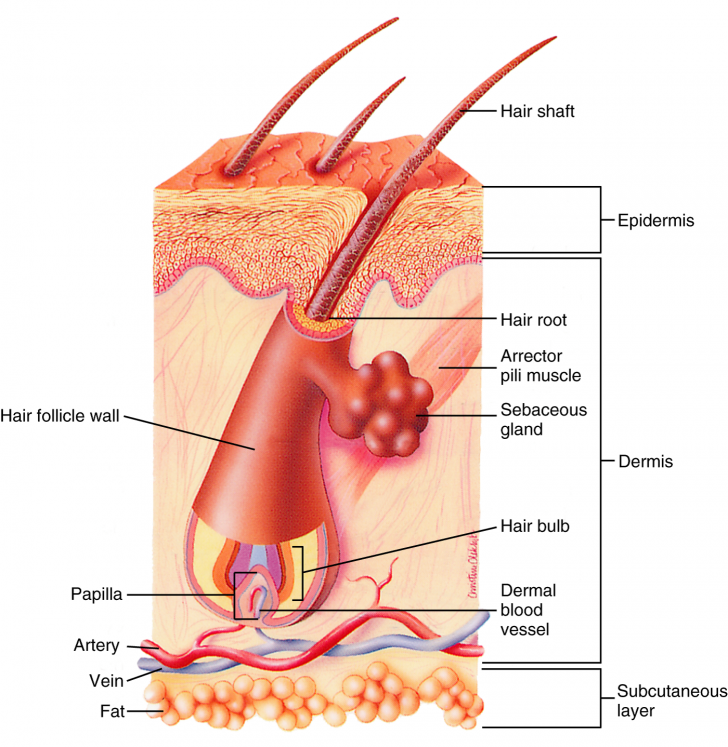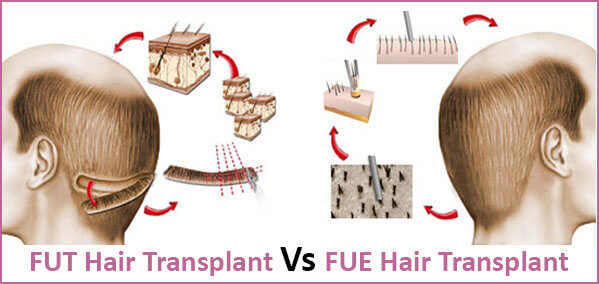What Is a Hair Transplant surgery?
Hair transplant surgery is a surgery that moves hair you already have from area called the ‘donor site’ to fill an area with thin or no hair or bald area known as the ‘recipient site’. Doctors have been doing these transplants but techniques have changed a lot in recent years.
It is primarily used to treat male pattern baldness . In this minimally invasive procedure, grafts containing hair follicles that are genetically resistant to balding, (like the back of the head) are transplanted to the bald area.
These transplanted hairs after growth can be cut or trimmed regularly. These can be shampooed or dyed if required. These hairs don’t require any medicines to maintain the growth as it occurs naturally and permanently. Even after complete shaving or tonsuring, these hairs will grow back and tend to do so for the rest of the life.
Transplanted hair roots should be bald resistant. And these bald resistant hair roots are usually present on the back or sides of the scalp …the donor area.

Hair structure
Before going to the procedure steps, it is important to have a bit of knowledge about the hair structure.A typical hair consists of hair shafts, follicles, sebaceous gland, nerve and blood vessels. The hair shafts can be seen above the skin and the follicular units stay under the surface. A hair follicular unit consists of 1-4 hairs.

Procedure and Types of hair transplant
You usually have the procedure in the doctor’s office. First, the surgeon cleans your scalp and injects medicine to numb the back of your head.
Your doctor will choose one of two methods for the transplant: follicular unit strip surgery (FUSS) or follicular unit extraction (FUE).
Follicular unit extraction (FUE)
If you’re getting the FUE procedure, the surgeon’s team will shave the back of your scalp. Then, the doctor will remove hair follicles one by one from there. The area heals with small dots, which your existing hair will cover.
Individual follicular units containing 1 to 4 hairs are removed under local anesthesia;. . After he prepares the grafts, the surgeon cleans and numbs the area where the hair will go, creates holes or slits with a scalpel or needle, and delicately places each graft in one of the holes. He placess them in a predetermined density and pattern, and angling the wounds in a consistent fashion to promote a realistic hair pattern. He’ll probably get help from other team members to plant the grafts, too.
FUE takes place in a single long session or multiple small sessions. The FUE procedure is more time consuming than strip surgery [the second method described below]. The density of the hair depends on the number of grafts present per sq. cm. Each sq. cm area of normal scalp contains more than 80 follicular units. Hence, in the bald area, more the number of grafts transplanted the denser the appearance. More than 40 follicular units per sq. cm should be implanted to give the natural look.
The procedue can take anywhere from a couple hours to extract 200 grafts for a scar correction to a surgery over two consecutive days for a megasession of 2,500 to 3,000 grafts.
the advantage of FUE procedure is that there is no need for large areas of scalp tissue to be disturbed, so there is no linear incision on the back of the head and it doesn’t leave a linear scar. Because individual follicles are removed, only small, dot like scars remain which are virtually not visible and any post-surgical pain and discomfort is minimized.

FUT [ Follicular unit transplant ] or FUSS [follicular unit strip surgery ] or Strip harvesting
With FUSS, the surgeon removes a 6- to 10-inch strip of skin from the back of your head. He sets it aside and sews the scalp closed. This area is immediately hidden by the hair around it.
Next, the surgeon’s team divides the strip of removed scalp into 500 to 2,000 tiny grafts, each with an individual hair or just a few hairs. The number and type of graft you get depends on your hair type, quality, color and the size of the area where you’re getting the transplant.
After that point, both procedures are the same ie the surgeon creates holes or slits with a scalpel or needle in the donor area, and delicately places each graft in the holes.

Advantages of FUE over strip surgery /FUSS
- Do not require cuts or stitches.
- Painless
- No scars
- Do not require conventional implanters
- 100% yield of grafts
- Uses automated FUE extraction machine
- Good density of hairs
How much time it takes to complete the hair transplant procedure
Depending on the size of the transplant you’re getting, the process will take about 4 to 8 hours. You might need another procedure later on if you decide you want thicker hair.
The process of transplantation is done in sessions if the area to be covered is more.. Transplanting more number of grafts at a single session can be termed as Mega and Super Mega sessions depending upon the number of grafts transplanted.
Mega session means transplanting more than 2000 follicular units (3500 follicles in a single session and super mega session comprises of transplanting large number of follicular units ( 5000).

How long does it take for transplanted hair to grow and what’s the growth rate?
Results will be visible after a few months. Within these months, hair will start to grow in the grafted areas. These hairs look natural and stay permanent.
Once the transplanted hair begins to grow, it will continue to do so for a lifetime. The transplanted hair generally sheds within the first 2-6 weeks after the procedure as the roots enter a resting phase. Between 3-8 months, the transplanted roots start sprouting hair. It usually takes 10-12 months to see the full improvement in terms of density, as the hair continues to mature and thicken
Is hair transplant painful?
Hair transplant surgery is much less painful now, than it was in earlier times when larger sections of scalp were excised. Older methods of scalp reduction, flap transfer have mostly been replaced by ultra refined follicular unit hair transplants[FUE]. The procedure itself is rendered painless by administration of local anesthetics. The patient can go back home the same day.
Previously In the strip FUSS method, pain killers were usually required for 5 to 6 days to reduce the pain due to the stitches in the scalp area.
The more advanced stitch-less FUE technique even does away with the need of any stitches. The donor hair roots are virtually plucked out when under the effect of anaesthesia. Since there are no knife cuts or stitches, there is no resultant pain even after the effect of the anaesthesia wears off.

We strictly follow international standards. With the team of dedicated and trained staff we provide excellence at most affordable price. Patients undergoing hair transplant surgery have advantage of benefiting from direct consultation with surgeon and then making a choice based on merits of technique rather than its price.